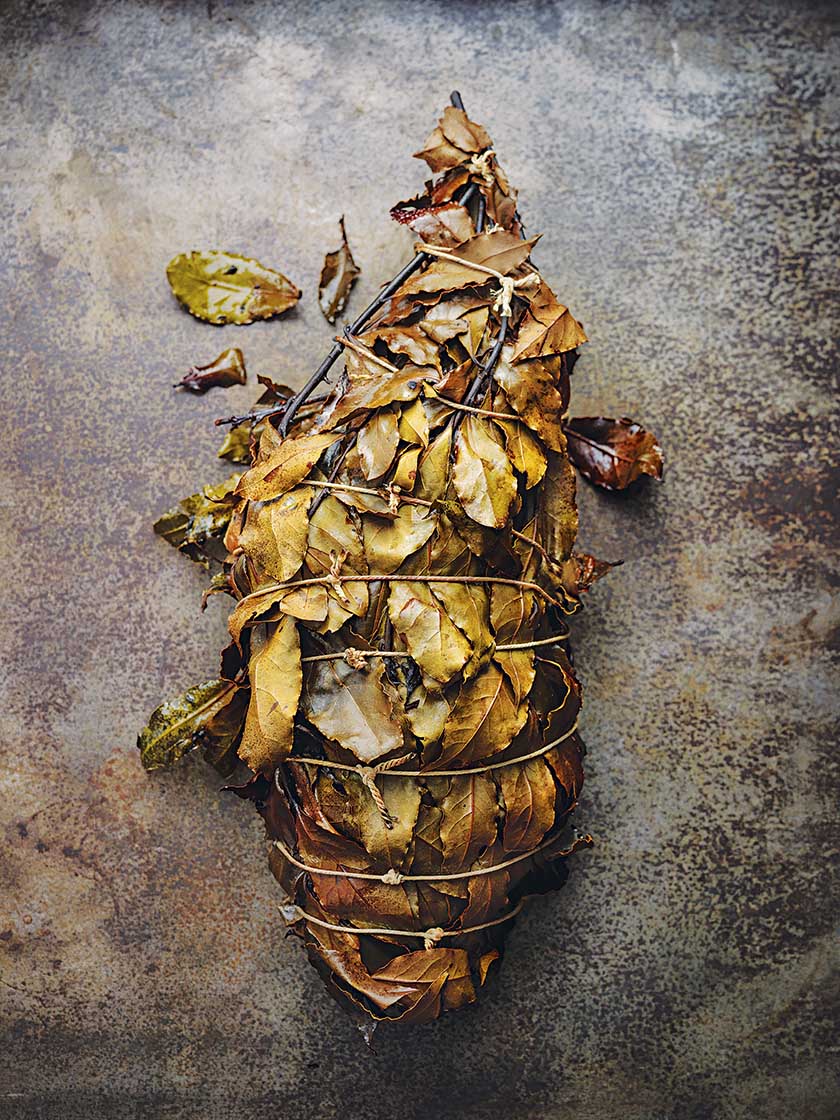Get Premium access to all the latest content online
Subscribe and view full print editions online... Subscribe
Serves 4-6 Starters and mains
Warm the flaky sea salt and juniper in a dry frying pan over a high heat for 4-5 minutes until the salt starts to discolour and the room smells of juniper. Remove from the heat, tip onto a plate and leave to cool. Crush together using a pestle and mortar.
Place the leg of lamb on a chopping board and make cuts about 1cm deep into the flesh with a sharp knife. You want to do this about 8-10 times on each side of the leg. Rub in the salt and juniper, massaging it right into the cuts. Rub over the olive oil then massage in the thyme leaves and lemon zest. Wrap the leg of lamb tightly in cling film and place in the fridge to marinate for at least 8 hours, but 24 hours would be better.
When you’re ready to cook the lamb, place one of the branches of bay leaves on a chopping board. Unwrap the lamb, place it on the bay leaves and then put the second branch on top. The branches should have enough leaves on them so that the lamb looks like a camouflaged tank.
Tie the lamb with butcher’s twine or kitchen string to secure the bay leaves.
Preheat the oven to 150C/ 300F/Gas 2. Stick a large roasting tin on the hob and warm over a medium heat. Pour in a little oil and add the celery. Sweat gently, stirring from time to time, until it starts to soften. Add the thyme sprigs and stir. Sit a roasting rack in the tin on top of the celery, place the leg of lamb on top and pour in the white wine and stock. Bring to the boil and cover tightly with tin foil.
Put the roasting tin in the oven and braise the lamb for 41⁄2 hours until it’s tender and flakes easily from the bone. Remove from the oven and leave to rest in the tin with the foil on for 30 minutes, then gently remove the lamb and place it on a chopping board.
Put the roasting tin back on the hob and boil the cooking liquor over a high heat until it is reduced by half to create lovely, fragrant lamb gravy. Add the butter towards the end of the cooking. Pass through a fine sieve, pushing as much as possible through, and keep to one side.
While the lamb is resting, prepare the cavolo nero. Warm the olive oil in a large, heavy-bottomed saucepan over a medium-low heat and throw in the onion and garlic. Sweat down for about 10 minutes, until just soft, stirring from time to time. Add the anchovies and the cavolo nero and stir to wilt the leaves. Add the lemon zest and season to taste.
Remove the string and the bay leaves from the joint. Blowtorch the lamb to give it a lovely, deep brown colour. Brush over a little of the gravy to glaze and serve with the salt-baked garlic, the wilted cavolo nero and the gravy in a warmed jug on the side.

Advertisement
Subscribe and view full print editions online... Subscribe